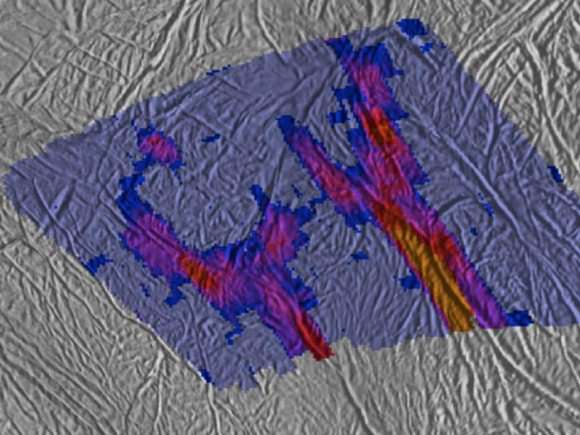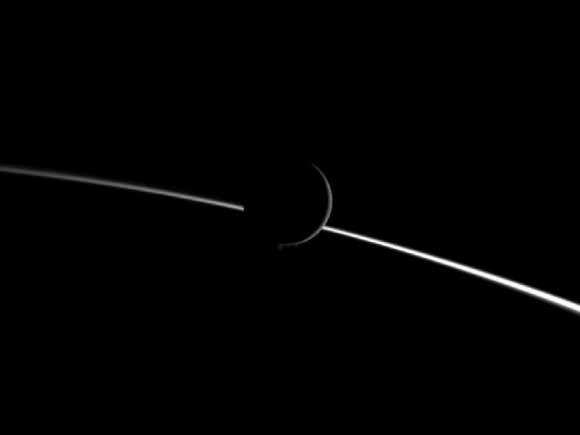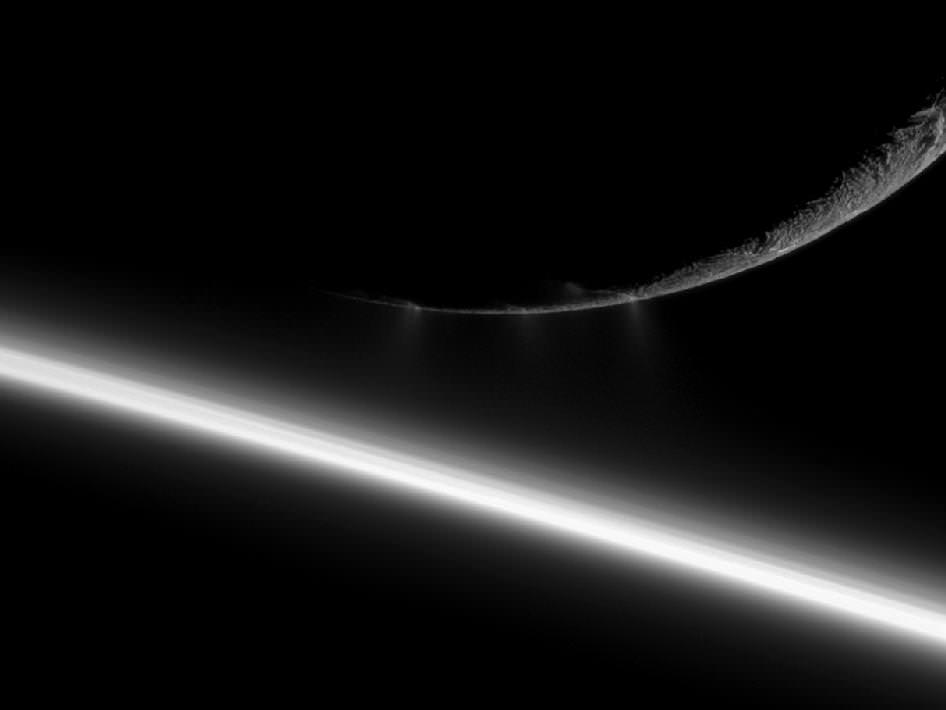[/caption]
As Cassini scientists await the data from today’s flyby of Enceladus, images and data from August of this year have provided more insight into the active fissures on the icy moon’s south polar region. These geyser-spewing fractures are warmer and more complicated than previously thought.
“The exquisite resolution obtained on one segment of the Damascus fracture — one of the most active regions within the south polar terrain — has revealed a surface temperature reaching a staggering 190 Kelvin, or 120 degrees below zero Fahrenheit,” said Cassini imaging team lead Carolyn Porco, in an email announcing the new images. “Far from the fractures, the temperature of the south polar terrain dips as low as 52 Kelvin, or 365 degrees below zero Fahrenheit.”
Porco said that what this means is that a phenomenal amount of heat is emerging from the fractures which are “undoubtedly the result of the tidal flexing of Enceladus brought about by its orbital resonance with Dione. However, details of this heating process are still unclear and are being studied at this very moment.”

The flyby on August 13, 2010 provided infrared spectroscopy along with high resolution images which have enabled scientists to construct the highest-resolution heat intensity maps yet of the hottest part of a region of long fissures spraying water vapor and icy particles from Enceladus. These fissures — known as “tiger stripes,” appear to be laid on in a complex web, and could be connected underground.
Additional high-resolution spectrometer maps of one end of the tiger stripes Alexandria Sulcus and Cairo Sulcus reveal never-before-seen warm fractures that branch off like split ends from the main tiger stripe trenches. They also show an intriguing warm spot isolated from other active surface fissures.
“The ends of the tiger stripes may be the places where the activity is just getting started, or is winding down, so the complex patterns of heat we see there may give us clues to the life cycle of tiger stripes,” said John Spencer, a Cassini team scientist based at Southwest Research Institute in Boulder, Colo.
The temperature measured in this flyby appears slightly higher than previously measured temperatures at Damascus, which were around 170 Kelvin (minus 150 degrees Fahrenheit).
Spencer said he isn’t sure if this tiger stripe is just more active than it was the last time Cassini’s spectrometer scanned it, in 2008, or if the hottest part of the tiger stripe is so narrow that previous scans averaged its temperature out over a larger area. In any case, the new scan had such good resolution, showing details as small as 800 meters (2,600 feet), that scientists could see for the first time warm material flanking the central trench of Damascus, cooling off quickly away from the trench. The Damascus thermal scan also shows large variations in heat output within a few kilometers along the length of the fracture. This unprecedented resolution will help scientists understand how the tiger stripes deliver heat to the surface of Enceladus.
Cassini acquired the thermal map of Damascus simultaneously with a visible-light image where the tiger stripe is lit by sunlight reflecting off Saturn. The visible-light and thermal data were merged to help scientists understand the relationships between physical heat processes and surface geology.
“Our high-resolution images show that this section of Damascus Sulcus is among the most structurally complex and tectonically dynamic of the tiger stripes,” said imaging science team associate Paul Helfenstein of Cornell University, Ithaca, N.Y. Some details in the appearance of the landforms, such as a peculiar pattern of curving striations along the flanks of Damascus, had not previously been noticed in ordinary sunlit images.

The Aug. 13 flyby of Enceladus is the last one dedicated to thermal mapping until 2015 and also gave Cassini its last look at any part of the active south polar region in sunlight.
The flyby today will aid in understanding the interior of the moon through gravity measurements.
To see more images from the August flyby, see Cassini website, and the CICLOPS imaging site.
Source: JPL, Porco email

